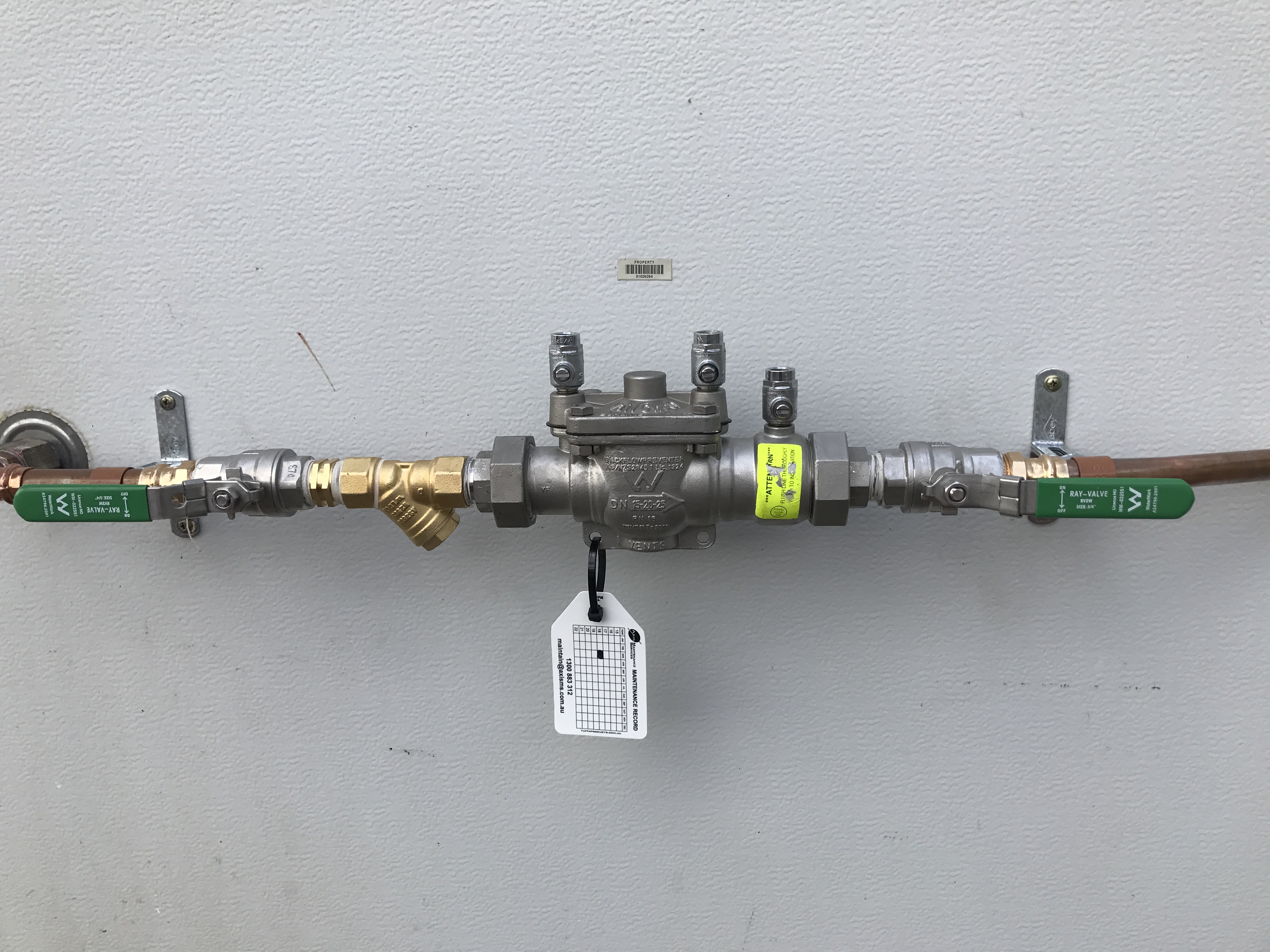Back siphonage

|
| This backflow prevention device includes a valve assembly with isolation valves and strainer. |
Collins Complete Do-It-Yourself Manual was published in 1986. It was created for William Collins Sons & Co. Ltd. by Jackson Day and conceived by Jackson Day Jennings Ltd.
It defines back siphonage as: ‘The siphoning of part of a plumbing system caused by the failure of mains water pressure’.
The negative pressure (or vacuum) that results in back siphonage can happen under conditions such as a water mains break or an increased use of water for fire fighting or construction purposes. When the vacuum occurs and the supply pressure decreases, back siphonage causes the water flow (or other liquid substances) to reverse.
Back siphonage may result in contaminated water being pulled into the clean water supply. This action is referred to as backflow. Backflow can also take place due to back pressure, which can occur when there is higher pressure in the system than in its supply. This can happen in certain types of heating systems where the pressure is increased for some reason (such as thermal expansion in unvented systems).
[edit] Preventing back siphonage
Air gaps can be used to help prevent both back siphonage and backflow. An air gap is a cleared vertical space that is placed in a way that allows it to control the water supply. These gaps can be used to regulate the pressure.
An atmospheric vacuum breaker (or AVB) can be used to prevent back siphonage. It is a type of backflow prevention device that can be used in situations where it is not possible to create an air gap.
Water-using appliances must provide an acceptable degree of protection against backflow or back siphonage. These parameters are determined in BS 6280:1982 Method of vacuum (backsiphonage) test for water-using appliances. Recommendations are also proscribed under the Water Supply (Water Fittings) Regulations 1999.
[edit] Related articles on Designing Buildings
- Backflow.
- Mains water.
- Plumbing.
- Potable water.
- Siphon.
- Vacuum breaker.
- Warning pipe.
- Water consumption.
- Water Services Regulation Authority.
- Water Supply (Water Fittings) Regulations 1999.
[edit] External resources
Featured articles and news
Construction Skills Mission Board launch sector drive
Newly formed government and industry collaboration set strategy for recruiting an additional 100,000 construction workers a year.
New Architects Code comes into effect in September 2025
ARB Architects Code of Conduct and Practice available with ongoing consultation regarding guidance.
Welsh Skills Body (Medr) launches ambitious plan
The new skills body brings together funding and regulation of tertiary education and research for the devolved nation.
Paul Gandy FCIOB announced as next CIOB President
Former Tilbury Douglas CEO takes helm.
UK Infrastructure: A 10 Year Strategy. In brief with reactions
With the National Infrastructure and Service Transformation Authority (NISTA).
Ebenezer Howard: inventor of the garden city. Book review.
The Grenfell Tower fire, eight years on
A time to pause and reflect as Dubai tower block fire reported just before anniversary.
Airtightness Topic Guide BSRIA TG 27/2025
Explaining the basics of airtightness, what it is, why it's important, when it's required and how it's carried out.
Construction contract awards hit lowest point of 2025
Plummeting for second consecutive month, intensifying concerns for housing and infrastructure goals.
Understanding Mental Health in the Built Environment 2025
Examining the state of mental health in construction, shedding light on levels of stress, anxiety and depression.
The benefits of engaging with insulation manufacturers
When considering ground floor constructions.
Lighting Industry endorses Blueprint for Electrification
The Lighting Industry Association fully supports the ECA Blueprint as a timely, urgent call to action.
BSRIA Sentinel Clerk of Works Training Case Study
Strengthening expertise to enhance service delivery with integrated cutting-edge industry knowledge.
Impact report from the Supply Chain Sustainability School
Free sustainability skills, training and support delivered to thousands of UK companies to help cut carbon.
The Building Safety Forum at the Installershow 2025
With speakers confirmed for 24 June as part of Building Safety Week.
The UK’s largest air pollution campaign.
Future Homes Standard, now includes solar, but what else?
Will the new standard, due to in the Autumn, go far enough in terms of performance ?
BSRIA Briefing: Cleaner Air, Better tomorrow
A look back at issues relating to inside and outside air quality, discussed during the BSRIA briefing in 2023.
Restoring Abbotsford's hothouse
Bringing the writer Walter Scott's garden to life.
Reflections on the spending review with CIAT.

























